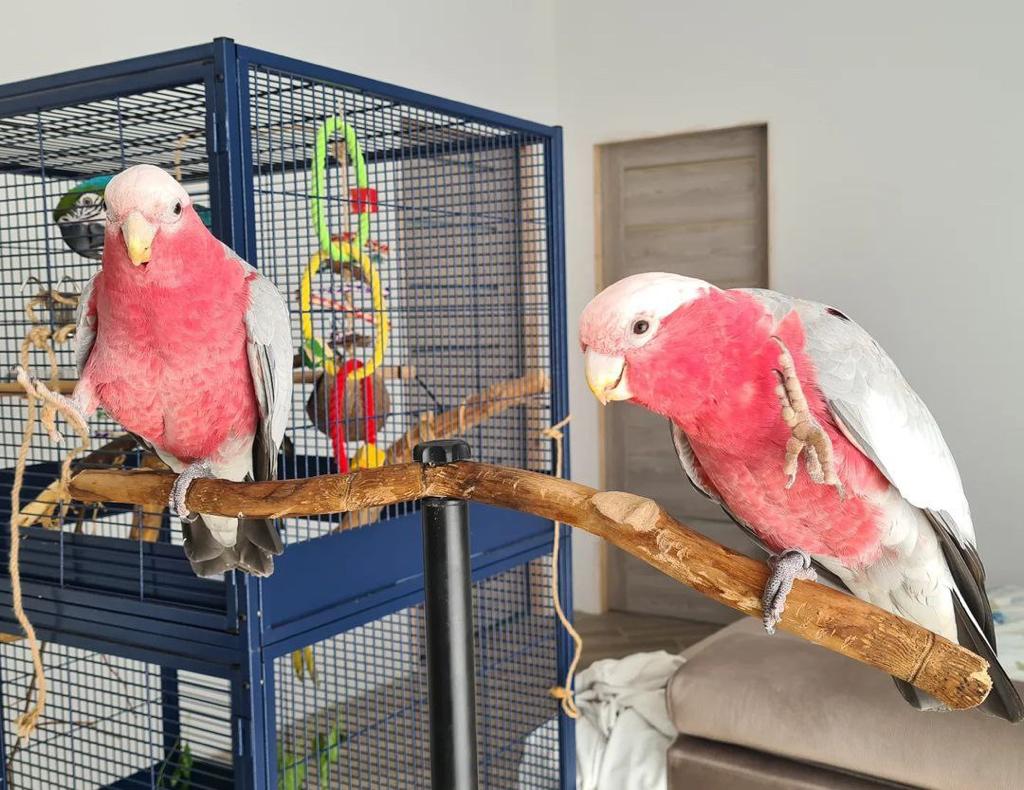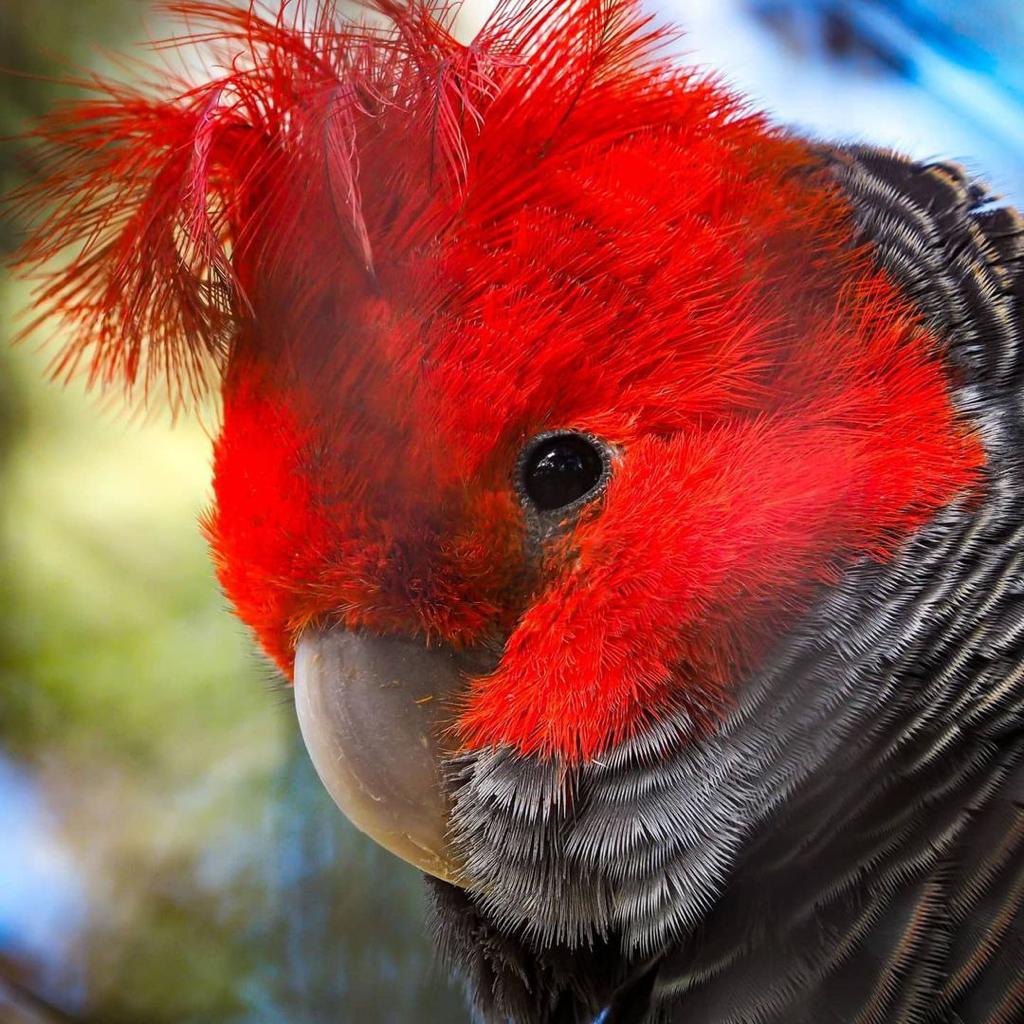Cockatoo
Cockatoo Behavior Training
A Comprehensive Guide for Bird Enthusiasts
To successfully train a cockatoo, it’s crucial to understand their flock mentality and emotional intelligence, akin to a 3-4 year-old child. Building trust, maintaining consistency, and using positive reinforcement are key foundational principles. Advanced techniques like target training and desensitization help address fear and encourage desired behaviors. Address common issues like screaming, biting, and feather plucking through patience, proper diet, and environmental enrichment. Socialization and professional help may be necessary for persistent problems. Training is an ongoing process requiring patience and commitment for a strong bond with your cockatoo.
Understanding Cockatoo Psychology: The Key to Successful Training
Cockatoos are emotional powerhouses with complex needs.
Their behavior is deeply rooted in their wild instincts and flock mentality.
To train a cockatoo effectively, you need to think like one.
The Flock Mentality
In the wild, cockatoos live in large, social groups.
This social structure influences their behavior in captivity.
Your cockatoo sees you as part of its flock.
This means:
- They crave constant interaction
- They can be demanding of attention
- They’re sensitive to hierarchical dynamics
Understanding this flock mentality is crucial for effective training.
Emotional Intelligence
Cockatoos have the emotional intelligence of a 3-4 year old human child.
They can experience a range of emotions, including:
- Joy
- Sadness
- Anger
- Jealousy
- Fear
Recognizing and responding to these emotions is key to successful training.
The Foundations of Cockatoo Behavior Training
Before diving into specific techniques, let’s establish the foundational principles of cockatoo training.
1. Building Trust
Trust is the cornerstone of any successful cockatoo-human relationship.
Without trust, no amount of treats or training techniques will work.
To build trust:
- Spend time near your cockatoo without demanding interaction
- Speak softly and move slowly
- Respect their personal space
- Offer treats without expecting anything in return
Remember, trust-building is a gradual process.
It can take weeks or even months, depending on the bird’s history and temperament.
2. Consistency is King
Cockatoos thrive on routine and consistency.
Inconsistent training leads to confused and frustrated birds.
To maintain consistency:
- Establish clear rules and boundaries
- Ensure all family members follow the same training protocols
- Maintain a consistent daily routine for feeding, training, and playtime
Consistency helps your cockatoo feel secure and understand what’s expected of them.
3. Positive Reinforcement: The Golden Rule
Positive reinforcement is the most effective training method for cockatoos.
This involves rewarding desired behaviors to encourage their repetition.
Effective positive reinforcement includes:
- Verbal praise
- Favorite treats
- Head scratches (if your cockatoo enjoys them)
- Extra playtime or attention
Never punish your cockatoo for undesired behavior.
Punishment can damage your relationship and lead to fear or aggression.
Advanced Cockatoo Training Techniques
Now that we’ve covered the basics, let’s explore some advanced training techniques.
Target Training
Target training is a versatile technique that forms the basis for many complex behaviors.
Here’s how to get started:
- Choose a target stick (a chopstick or dowel rod works well)
- Present the stick near your cockatoo
- When they touch it with their beak, immediately click (if using a clicker) and reward
- Gradually increase the distance they need to move to touch the target
- Once mastered, use the target to guide your cockatoo to different perches or through simple tricks
Target training can help with nail trims, vet visits, and even flight recall.
Desensitization and Counter-Conditioning
These techniques are crucial for addressing fear-based behaviors.
Desensitization involves gradually exposing your cockatoo to a fear trigger at a low intensity.
Counter-conditioning pairs this exposure with positive experiences.
For example, if your cockatoo fears hands:
- Start by keeping your hand visible but at a distance
- Reward calm behavior with treats tossed from afar
- Gradually decrease the distance over multiple sessions
- Eventually, offer treats from your hand
This process can take weeks or months, so patience is key.
Trick Training
Trick training is an excellent way to provide mental stimulation and strengthen your bond.
Some fun tricks to teach your cockatoo include:
- Wave goodbye
- Turn around
- Play dead
- Retrieve small objects
Remember to break each trick down into small, achievable steps.
Reward progress consistently, and keep training sessions short and fun.
Addressing Common Cockatoo Behavior Issues
Even well-trained cockatoos can exhibit challenging behaviors.
Let’s explore some common issues and how to address them.
Screaming
Cockatoos are naturally vocal, but excessive screaming can be problematic.
To reduce screaming:
- Ignore the behavior completely
- Reward quiet moments with attention and treats
- Ensure your cockatoo gets enough mental and physical stimulation
- Maintain a consistent sleep schedule
Remember, attention (even negative) can reinforce screaming.
Biting
Biting is often a sign of fear, frustration, or boundary-setting.
To address biting:
- Identify and avoid triggers
- Use positive reinforcement to reward gentle behavior
- Provide alternative outlets for chewing (like safe toys)
- If a bite is imminent, slowly and calmly remove the bird to a neutral area
Never react aggressively to biting, as this can escalate the behavior.
Feather Plucking
Feather plucking can have various causes, including stress, boredom, or medical issues.
To address feather plucking:
- Consult an avian vet to rule out medical causes
- Increase environmental enrichment
- Ensure a balanced diet
- Consider using a collar as a last resort (under veterinary guidance)
Addressing feather plucking often requires a multi-faceted approach and professional help.
The Role of Diet in Cockatoo Behavior
A balanced diet is crucial for your cockatoo’s physical and mental health.
Poor nutrition can lead to behavioral issues like aggression or lethargy.
A healthy cockatoo diet should include:
- High-quality pellets (50-60% of diet)
- Fresh vegetables (30-40%)
- Limited fruits (5-10%)
- Occasional nuts and seeds as treats
Avoid foods high in fat or sugar, as these can lead to health issues and mood swings.
Creating an Enriching Environment
A stimulating environment is key to preventing boredom-related behavior issues.
Your cockatoo’s living space should include:
- Multiple perches of varying materials and diameters
- A variety of toys (rotated regularly to maintain interest)
- Foraging opportunities (like puzzle feeders)
- Safe spaces for rest and privacy
Ensure plenty of out-of-cage time in a bird-proofed area.
This allows for exercise, exploration, and bonding time with you.
The Importance of Socialization
Cockatoos are highly social creatures.
Proper socialization is crucial for their mental well-being.
This includes:
- Regular interaction with human family members
- Supervised interaction with other pets (if appropriate)
- Exposure to various environments and stimuli
However, avoid over-reliance on human interaction.
This can lead to pair-bonding behaviors and associated issues.
When to Seek Professional Help
Sometimes, despite our best efforts, we need expert assistance.
Consider consulting an avian behaviorist if:
- Aggressive behaviors persist or escalate
- Self-mutilation (like feather plucking) doesn’t improve
- You’re feeling overwhelmed or frustrated with training
- Your cockatoo shows signs of severe anxiety or stress
Professional help can provide tailored strategies and support.
The Ongoing Journey of Cockatoo Behavior Training
Remember, cockatoo behavior training is a lifelong process.
These intelligent birds are always learning and adapting.
Stay patient, stay consistent, and enjoy the journey of discovery with your feathered friend.
With time, effort, and love, you’ll master the art of cockatoo behavior training and build a rewarding relationship that lasts a lifetime.
Now, let’s compare some of the cockatoo species mentioned in our product file:








